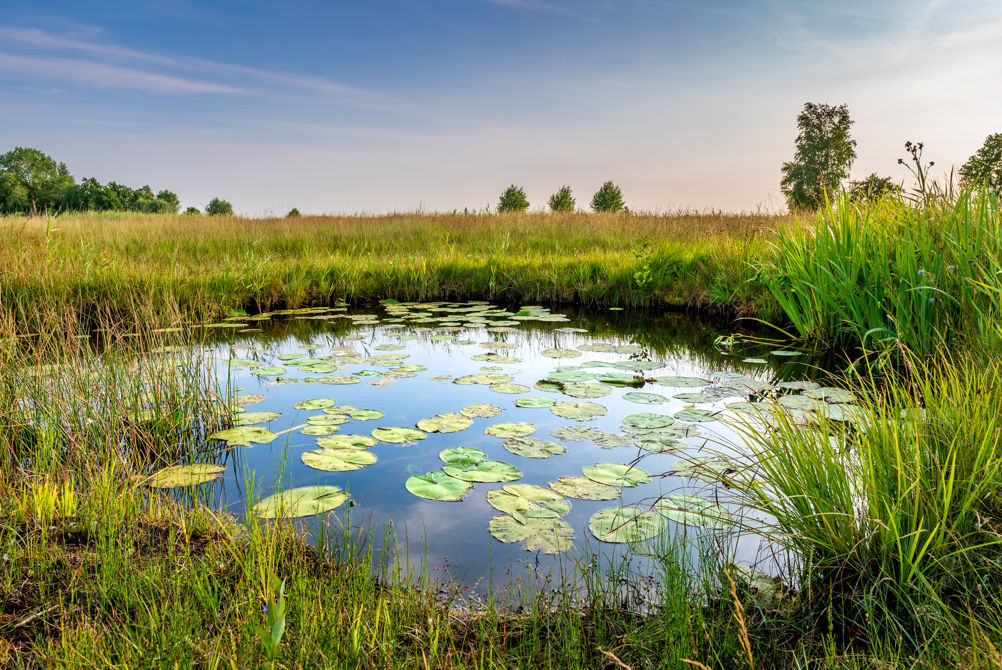Montreal in Canada will shortly host COP15, the 15th Conference of Parties (COP) to the United Nations Convention on Biological Diversity. Chaired by China, it is a critical meeting in which the nations of the world will come together to discuss the world's biodiversity. As an ecologist advising on the effects of civil engineering projects on nature, I was already following the build-up to COP15 closely, but when it was announced that the city of my company’s global HQ would be hosting it, this added an extra feeling of personal involvement.
For many, the first time they will have seen the term ‘COP’ was at last year’s COP26 on climate change, hosted in Glasgow. However, the United Nations holds COPs (‘Conferences of the Parties’) to create international action plans for many international conventions. At COP15 on biodiversity, we are hoping to see a commitment to nature on a par with of the 2015 Paris Agreement on climate change. The Paris Agreement united most of the world’s nations in a single agreement on cutting greenhouse gas emissions, a pivotal moment in the fight against climate change.
At the moment, biodiversity is declining at an alarming rate. Work by WWF found that wildlife populations have declined by 69 per cent since 1970[1]. We no longer need to look at just reducing the rate of loss, but beginning a time of restoration instead of decline, literally creating a Nature Positive future. Action is needed in all countries, and the UK is recognised as one of the most nature-poor in the world, something that needs to change to better support our society and economy as well as helping the natural environment itself.
So, what can engineers do to help? Companies can engage directly with COP15. In particular, we can sign the ‘Make It Mandatory’ campaign, led by Business For Nature[2], a global coalition of business and conservation organisations. Signatories to the ‘Make It Mandatory’ business statement are joining together to urge governments to be as ambitious as possible in creating the Global Biodiversity Framework, which is due to be agreed and adopted at COP15.
‘Make it Mandatory’ calls for the Framework to include a requirement for large businesses and investors to assess and report on the impact of their activities on nature. Mandatory reporting will help businesses become part of a Nature Positive future, benefiting our economy and society in many ways as well as helping the natural world. An ambitious Global Biodiversity Framework will benefit us all, and I am delighted that SNC Lavalin is a signatory.
For civil engineers, it is obvious that projects can result in habitat loss and harm to species, and project managers and designers can work with ecology colleagues to look for opportunities to reduce harm and start integrating enhancements into schemes.

For all engineers, investigating the supply chain for materials will always show dependencies, risks and impacts relating to nature. For example, agricultural land change is a key driver of nature loss. Also, to deploy the technologies needed to achieve carbon net zero goals by 2050, the demand for copper mining between now and 2050 has been calculated to be more than all the copper mined across the world since 1900[3].
While not everyone can be at the international negotiations in Montreal, there are a variety of steps that we can take to help tackle biodiversity loss. For example our companies don’t need to wait for government regulations to start bringing biodiversity into ESG reporting. There are many tools to pick from, such as the Taskforce for Nature-Related Financial Disclosure’s draft framework.
Obviously, understanding the issues being discussed is vital, by following what happens in Montreal next month, as well as joining initiatives like the Business for Nature business statement. As individuals we can all get more involved in making the world a more biodiverse place by speaking to your local council or office grounds managers, encouraging them to create more biodiverse public spaces.
It’s easy to see global biodiversity loss as inevitable and that it’s just too big a problem to fix. But there is still time to change from biodiversity loss to restoration and make a real difference.
The disruptive events of the last few years, including the global covid pandemic, have made us all step aside from business as usual and re-evaluate. The new focus on our natural world, both biodiversity loss and carbon emissions, means we have the perfect opportunity to turn things around for good.
[1] Living Planet Report 2022 | WWF (panda.org)
[3] The future of Copper in the Energy Transition | IHS Markit

Claire Wansbury is an Atkins Fellow and Associate Director, Ecology





Transparent bamboo offers challenge to silica glass
The <i><b>Research</b></i> paper doesn't actually include a picture of the product but here is one from another research team, also Chinese, from 2022...